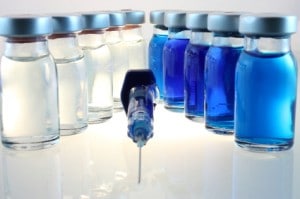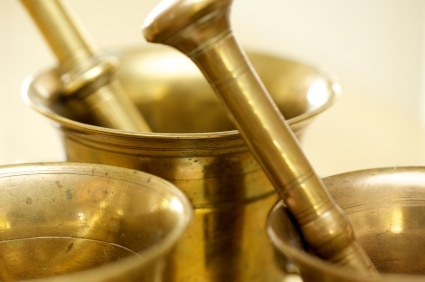Testosterone Therapy for Men and Women
For men and women suffering from low testosterone many forms of testosterone therapy now exist. Testosterone provides a wide range of health benefits, and when testosterone is low all organ-systems pay a price.
Testosterone is the “hormone of desire” for both men and women, and declining libido is perhaps the most common symptom of low testosterone. Low testosterone is also associated with decreased muscle mass and increased body fat, impaired glucose metabolism, lack of energy, erectile dysfunction, mood swings and depression, and decreased bone density, just to name a few (see “Low Testosterone Symptoms” and “Testosterone Deficiency”).
The Ideal Testosterone Treatment
For individuals suffering from low testosterone several options are available for replacement therapy each with its own advantages and disadvantages.
Ideally, testosterone therapy should meet 3 criteria. It should replicate the body’s daily production of testosterone. It should provide adequate, predictable, and consistent blood levels of testosterone. And, it should be delivered in such a way as to minimize conversion of testosterone into other hormones. Some testosterone gets converted into estradiol, or the “female hormone”, and into dihydrotestosterone or DHT. These conversions are not harmful unless excess conversion occurs as both men and women make these two hormones naturally.
At this time there is not a testosterone preparation that meets the above 3 criteria.
Forms of Testosterone Therapy
 The gold standard of testosterone therapy has been testosterone injections. Injections are the best way to get optimal blood levels of testosterone. One disadvantage is that it does involve injecting the testosterone into a major muscle usually once a week. Usually after an injection blood levels rise above the so-called reference range and then decline over the ensuing days until the next injection. So blood levels can fluctuate quite a bit from day 1 or 2 of the injection cycle and day 6 or 7 of the cycle producing a “roller coaster” effect for some. If that happens the dose can be split in half and giv
The gold standard of testosterone therapy has been testosterone injections. Injections are the best way to get optimal blood levels of testosterone. One disadvantage is that it does involve injecting the testosterone into a major muscle usually once a week. Usually after an injection blood levels rise above the so-called reference range and then decline over the ensuing days until the next injection. So blood levels can fluctuate quite a bit from day 1 or 2 of the injection cycle and day 6 or 7 of the cycle producing a “roller coaster” effect for some. If that happens the dose can be split in half and giv
en twice a week to provide for more stable levels.
Topical testosterone can be delivered in the form of gels, creams, and patches. Topical testosterone is usually administered daily and has the advantage of more closely mimicking the body’s natural daily production of testosterone.
Disadvantages of topical testosterone therapy include difficulty achieving adequate blood testosterone levels in some patients, and since it is topical some testosterone can be transferred to other individuals and pets that come in contact with the patient. Also, topical testosterone is more likely to converted to DHT. High DHT levels can lead to thinning of the hair. To minimize this conversion topical testosterone is best applied to skin that has no hair, which can be challenging for many men. Other medications are available to block the conversion of testosterone to DHT if necessary.
Testosterone gels are available commercially, and gels and creams can also be compounded by a pharmacy. Testosterone patches are associated with skin irritation in up to 44% of the patients in one study.
Oral testosterone is not recommended because oral medications pass through the liver first before they reach their target tissue. Oral testosterone can be toxic to the liver and oral use is not recommended.
Extended-release testosterone pellets are available and are inserted under the skin usually in the buttock region. Good blood levels of testosterone can be achieved for 3 to 6 months. Insertion of the pellets involves an office procedure and the pellets are about the size of grain or rice. One disadvantage of these pellets is adjusting the dose if levels are too high or low. Though, the procedure is safe there is a risk of infection.
A buccal pellet is available and is applied to the gum line every 12 hours. It can cause some gum irritation and chewing gum is discouraged. It is probably the least prescribed mode of testosterone therapy.
Conversion of testosterone to estradiol can occur with all testosterone preparations, but is more likely in males with excess body fat as the enzyme responsible for this conversion is present in high concentration in fat tissures. This conversion can be blocked by the use of other medications called aromatase inhibitors
Human Chorionic Gonadotropin (HCG)
HCG is a hormone that mimics lutenizing hormone (LH). LH stimulates the Leydig cells in the testes to produce testosterone. In younger men, and those desiring future children HCG can be injected subcutaneously to raise testosterone levels and can be an effective form of testosterone therapy. HCG loses its effectiveness as men age and Leydig cells decline in function and number.
See related articles, “Low Testosterone Symptoms“, “Low Testosterone Levels“, “Does Testosterone Reduce Inflammation?”, and “Testosterone Deficiency“.


Hello Sir,
i am 24 years old boy,i am still unmarried but i have a problem since last 3 weeks.
1-Erectile dysfunction
2-low energy
3-stress
4-feeling sleepy all the time
i have researched a lot on internet about these problems and then finally i think that this is a low testosterone level problem…..please give me some suggestions how to increase testosterone level…..
i am very thankful to you for reading my problem.
It would be unusual for you to have low testosterone at your age, but it does occur and I have seen a handful of males in their mid-20s who are. Getting your testosterone levels measured would be very reasonable in addition to having your thyroid function checked. Stress in and of itself can cause/contribute to the symptoms you listed. On 12/12/12 we will publishing an article on “Eating Your Way To Higher Testosterone Levels”. There is also one on the site called “How to Boost Testosterone Naturally”.